Welcome to Notes from Anoop!
For several years, I maintained a monthly blog—but as the realities of book publishing took priority, I stepped away. Still, enough of you kept asking about it that I decided it was time to bring it back. I’m excited to share this next chapter with you.
Here, you’ll find reflections on my travels, updates on my publishing journey, writing tips and musings, and thoughtful book recommendations. I’m so glad you’re here.
My adventures at A Kenyan SAFARI : The Big 5
The golden era of East African safaris emerged in the 1920s and 1930s, when the allure of the wild captured global imagination. Popularized by Hollywood films and the vivid storytelling of adventurous writers like Ernest Hemingway, the safari experience became a symbol of romance and rugged exploration, with Nairobi at its heart. At the time, a traditional safari often meant hunting for the big five—lion, leopard, buffalo, rhino, and elephant—considered the most prized and dangerous of Africa’s wildlife. Affluent foreign travelers paid a premium to be led by professional hunters who ensured both safety and success in securing prized trophies—a challenge Hemingway both pursued and romanticized. By the end of the 1960s, however, hunting safaris gave way to photographic ones, marking a shift toward conservation-minded tourism. T his transformation was fueled by the rise of mass tourism and the use of land cruiser 4x4 vehicles capable of traversing even the roughest landscapes.
Then came The Lion King, and suddenly it seemed as though everyone—along with their uncle—was eager to witness the breathtaking beauty and untamed charm of the African wilderness. Luxury tented camps soon dotted the landscape, offering comfort and indulgence at every stop. Weary travelers were welcomed with hot showers, en-suite bathrooms, and even high-end amenities like designer hairdryers. Dining areas, adorned with vibrant local artistry, served gourmet meals prepared at live pasta stations, complemented by curated selections of fine wines and top-shelf whiskies. This blend of adventure and opulence helped fuel the explosive growth of photographic safaris and wildlife tourism across the region.
Eight years ago, I went on safari in South Africa. While the thrill of observing wildlife in their natural habitat was unforgettable, we spotted only a single lion—and the most elusive of them all, the leopard, never showed. Even then, I knew I’d return. This time, I set my sights on East Africa, specifically Kenya—the birthplace of the safari (the word means “journey” in Swahili!). We explored four spectacular game reserves in total. Did I finally see all members of the legendary Big Five? Read on to discover the highlights of my latest wildlife adventure.
AFRICAN ELEPHANTS
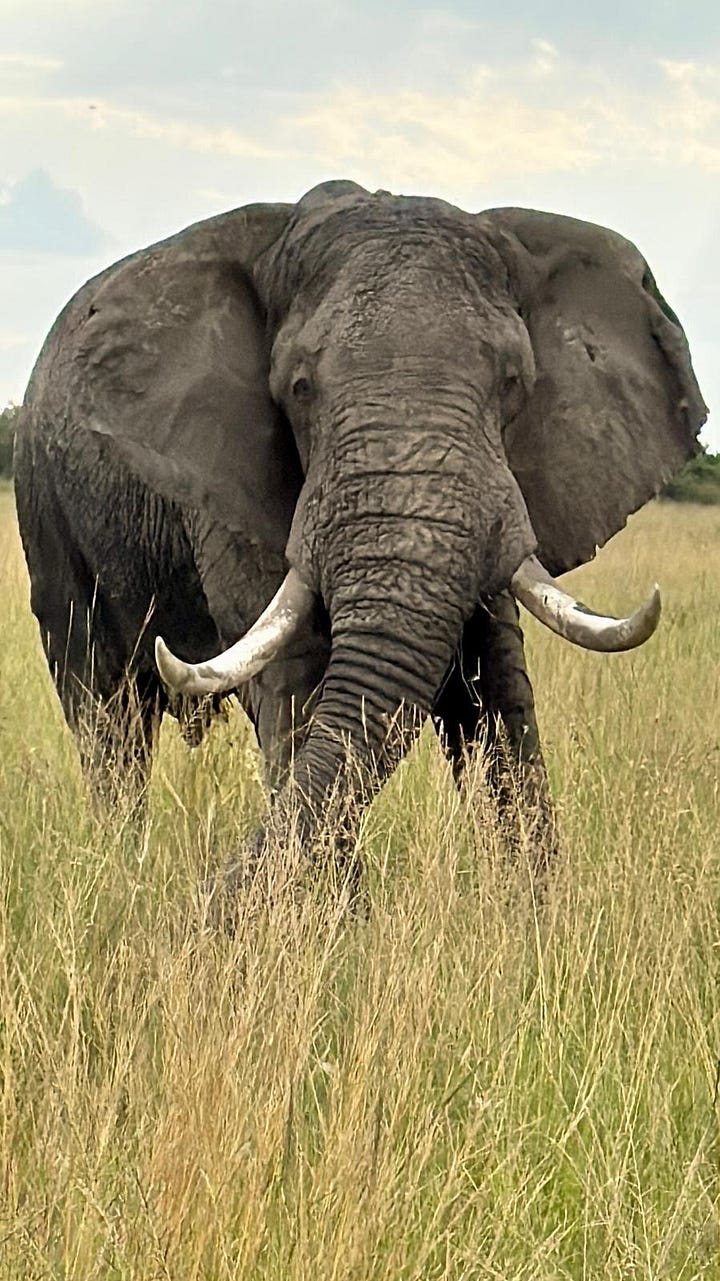
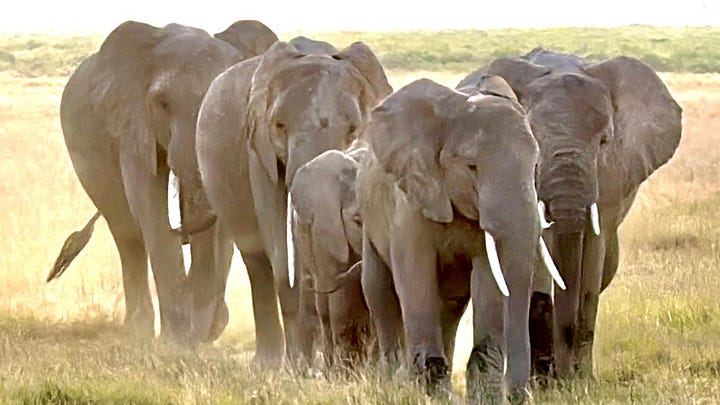
As we drove into Amboseli National Park, we were greeted by the majestic sight of a herd of elephants—one of Africa’s legendary “Big Five.”
Seeing elephants roam freely in their native habitat, especially with their full, unbroken tusks, was profoundly heartwarming. These gentle giants—some of the largest land mammals on Earth—are incredibly intelligent and social. As they age, their ears become notched from years of brushing through thorny bushes—unique markings that park rangers use to identify individual elephants, much like fingerprints in humans. Interestingly, no two elephant ears are the same.
CAPE BUFFALO
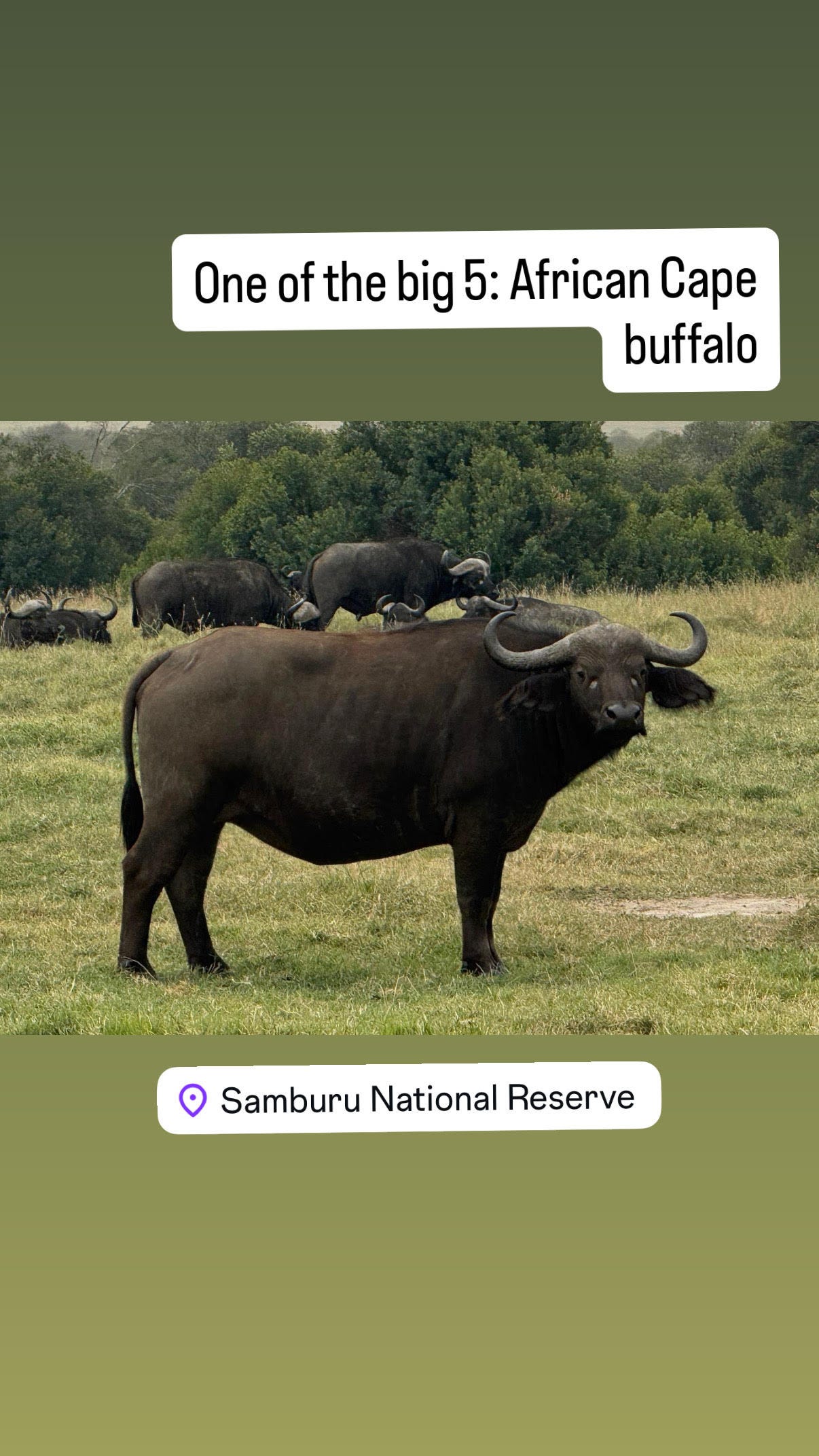
Another unforgettable sighting at Amboseli was the formidable African buffalo—specifically, the Cape buffalo, a member of the Big Five and one of Africa’s most dangerous and unpredictable animals. Despite their resemblance to domestic cattle, Cape buffalo have never been successfully domesticated, owing to their wild temperament and fierce independence.
What makes them especially fascinating is their remarkable herd behavior and defensive instincts. Unlike zebras, which often flee when a predator attacks one of their own, Cape buffalo are known to stand their ground—and fight back. If a lion targets a member of the herd, the others will often circle back to defend it, sometimes even ganging up to chase or gore the predator. There are countless documented cases of Cape buffalo rescuing fellow herd members from a lion’s jaws, a testament to their strength, loyalty, and resilience.
Watching them graze calmly under the shadow of Mount Kilimanjaro, it was easy to forget their reputation—until you looked into their eyes and saw the unmistakable spark of wildness.
LIONS
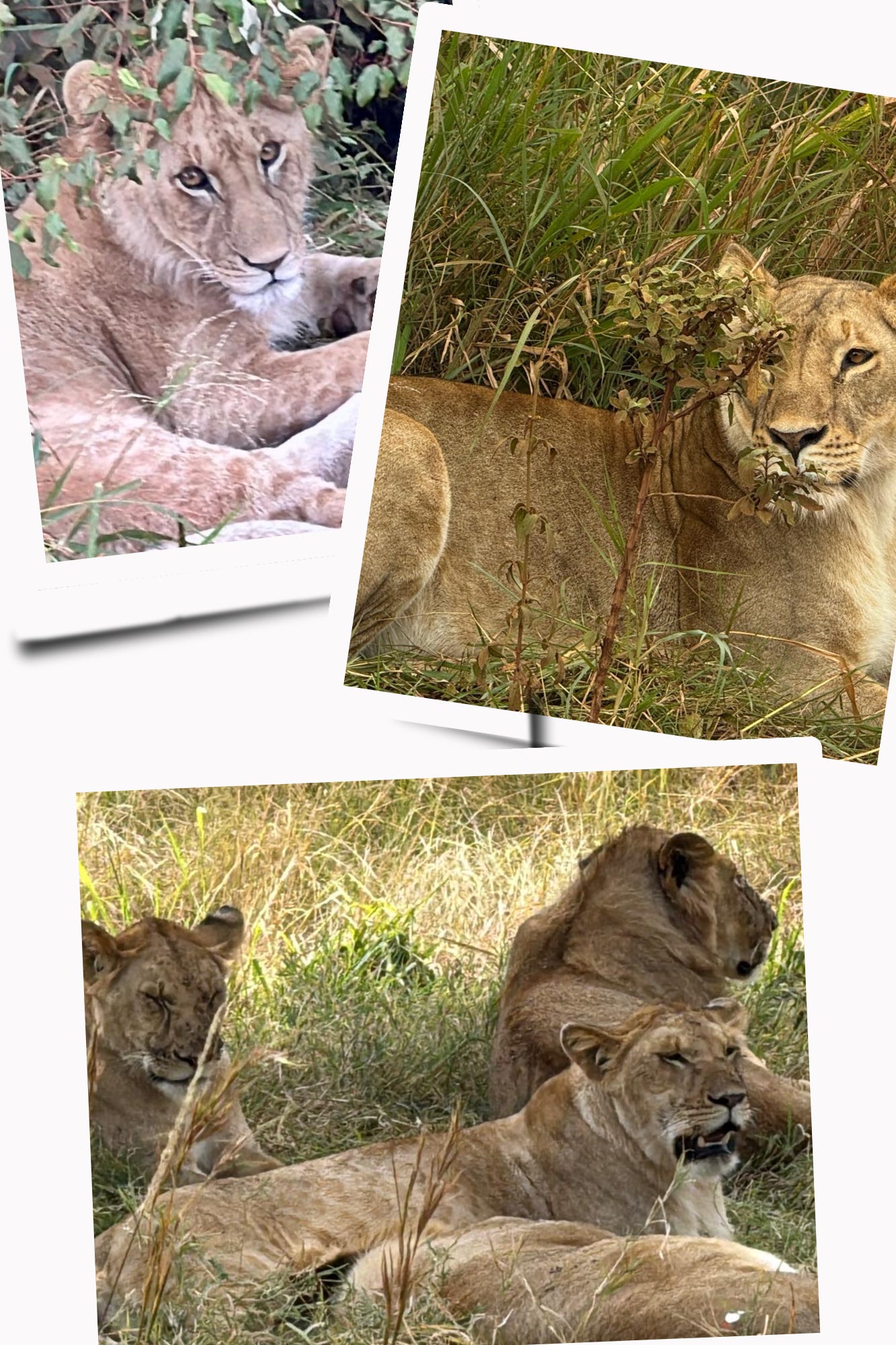
After several near misses in Amboseli and Samburu National Reserve, we were finally rewarded with a breathtaking sighting of lions during a night game drive at the Ol Pejeta Conservancy. Seeing these majestic creatures in the wild—silent, powerful, and utterly regal—was the highlight of our safari.
In the complex social structure of lion prides, young males are often pushed out as early as 18 months to 2 years old. This exile serves a biological purpose: it prevents inbreeding, as these young males would eventually attempt to mate with the females in their birth pride. Once cast out, their mission is clear but perilous—they must find a new territory and pride to call their own.
Establishing dominance isn’t easy. To take over a pride, incoming males must challenge and kill the dominant male, and often, tragically, all the cubs sired by him. This brutal takeover resets the pride for the new male’s lineage. If a young male hasn’t claimed a territory by the age of four, he often forms a coalition with other ousted males. Together, these alliances can increase their chances of overpowering a resident pride and seizing control.
Lions are awe-inspiring animals, and we got to see three prides of lions in Masai Mara too!
RHINOS
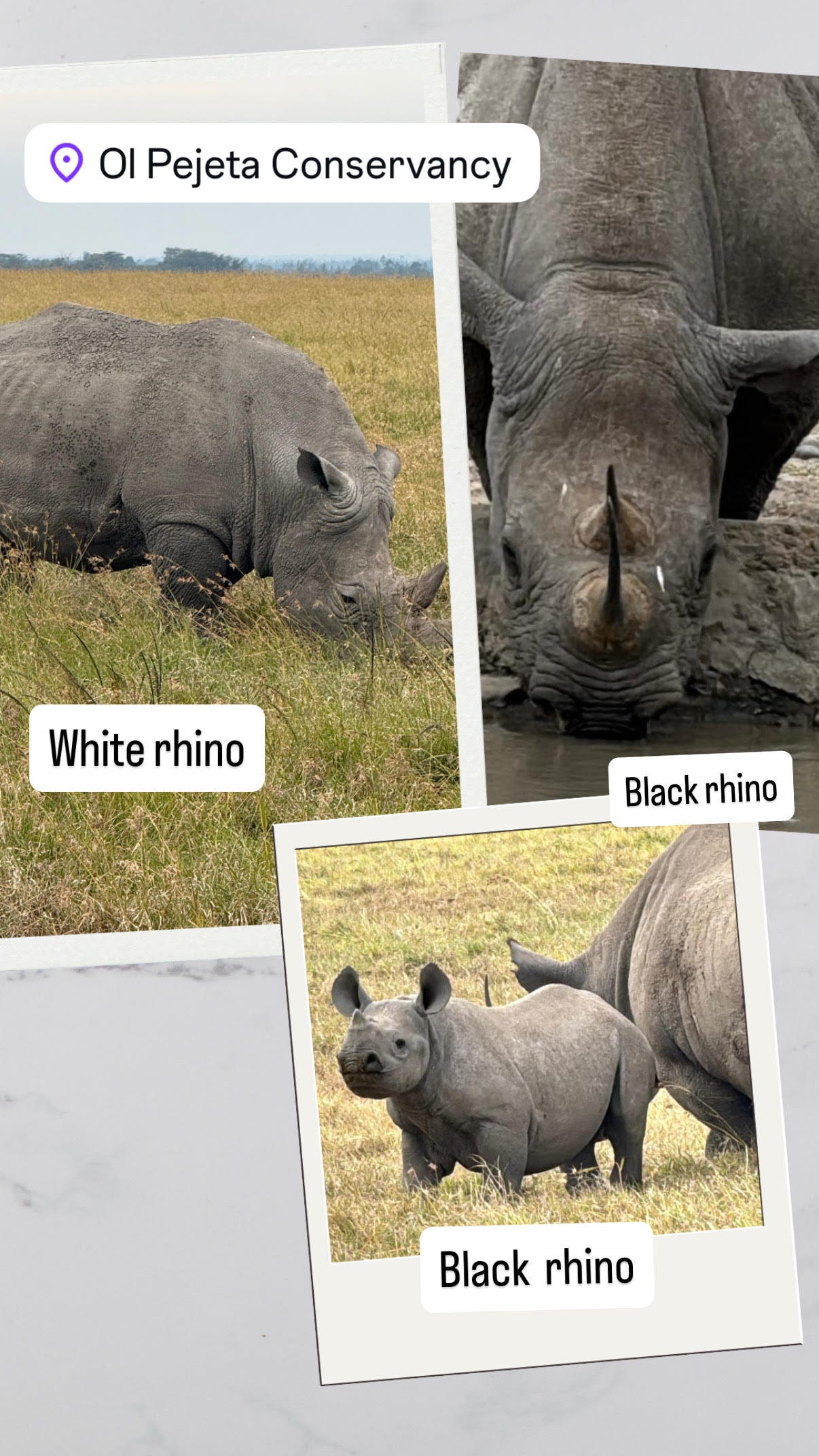
While at Ol Pejeta Conservancy, we were privileged to witness both white and black rhinos in their natural habitat—an increasingly rare and awe-inspiring sight. Rhinos are solitary creatures by nature and, interestingly, do not interbreed across species.
The name “white rhino” is believed to originate from the Afrikaans word “wyd,” meaning “wide,” referring to the animal’s broad, square-shaped mouth perfectly adapted for grazing. Early English settlers misheard the word and mistakenly associated it with the color “white.” This linguistic mix-up led to the distinction between “white” and “black” rhinos, even though both species are, in reality, various shades of gray.
To further clarify the difference: white rhinos, also known as square-lipped rhinoceroses, are grazers. Their wide, flat mouths are ideal for feeding on grass in open savannahs. In contrast, black rhinos are browsers. They have a pointed, prehensile upper lip—triangular in shape—that allows them to grasp leaves and twigs from shrubs and trees.
Seeing both species up close served as a powerful reminder of the richness of African biodiversity—and the urgent need to protect it.
LEOPARDS
After spotting leopards only from a distance—and through binoculars—in Amboseli and Samburu, we were finally rewarded at the Maasai Mara with a close-up view of the most elusive member of the Big Five: the leopard. Sleek, powerful, and breathtakingly beautiful, this solitary predator is often admired for its distinctive rosette-patterned coat, which has sadly also made it a target for poachers.
Unlike lions, leopards are solitary and secretive by nature, preferring to hunt and live alone. They are masterful climbers, often dragging their prey high into tree branches to protect it from scavengers like hyenas and lions. Their incredible strength and agility allow them to hoist carcasses that weigh more than they do, a feat unmatched by any other big cat.
To see one this close, resting regally in the dappled shade or slinking silently through the tall grasses of the Mara, felt like a gift from the wild itself—raw, untamed, and unforgettable.
Our safari was organized by Tropical Woods Adventures: Jill Van Kekerix, 402-617-6211
FICTION WRITING TIP
Make your characters want something—even if it’s just a glass of water.
A character’s desire is the engine of your story. Whether it’s love, revenge, freedom, or simply to be understood, that yearning propels the plot forward and gives readers someone to root for (or against). If your scene feels flat, ask: What does my character want right now—and what’s stopping them from getting it? Conflict + desire = drama.
WRITING PROMPT
Write down a patently false statement about yourself: I have a pet snake or I take my feet off at night or I cleared 2 million in the heist last week—the farther from the truth the better. Carry on about it. Begin to develop the personality of a person of whom this statement would be true.






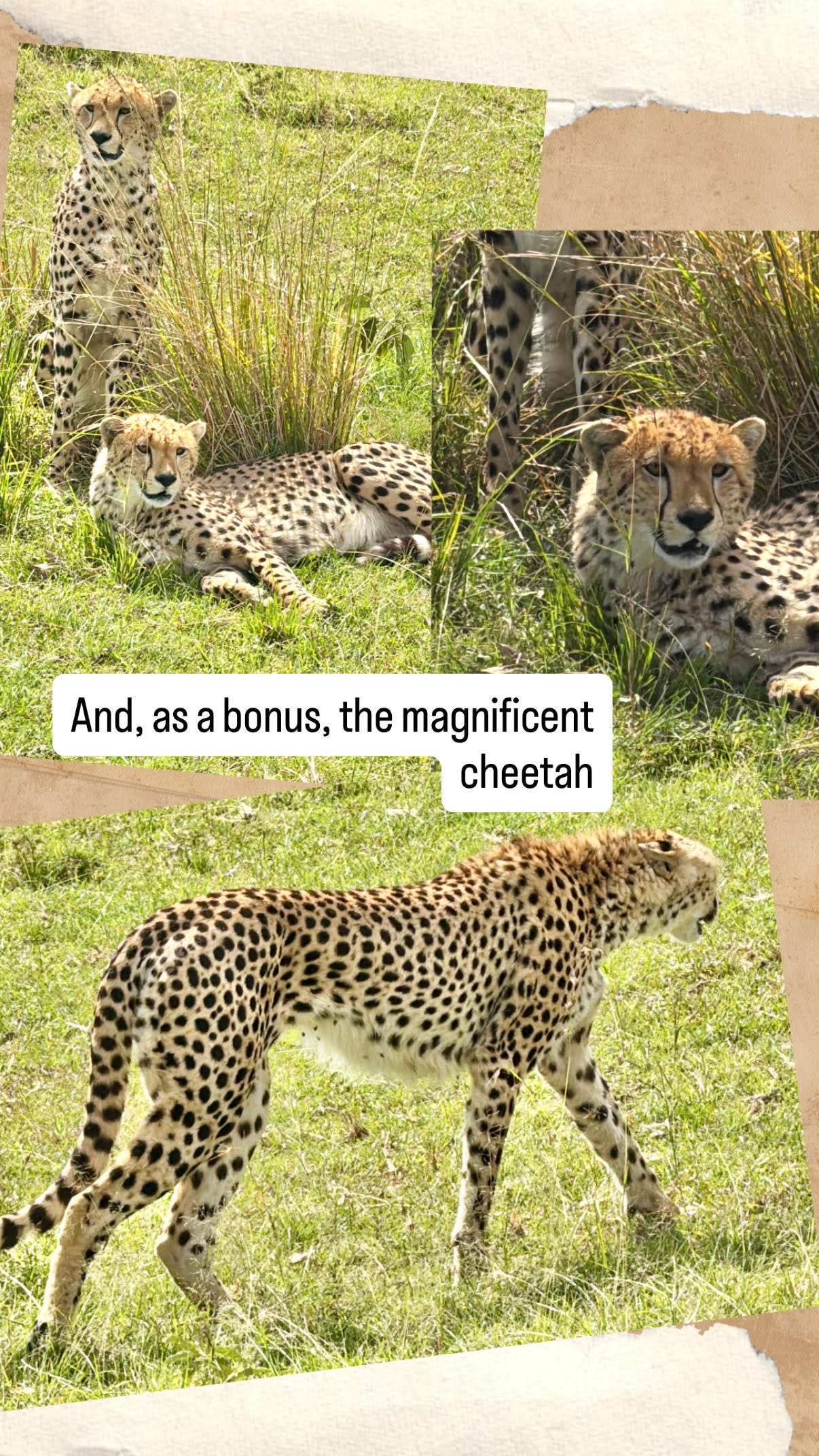
Beautiful read, loved the detail on the animal behavior with pictures!